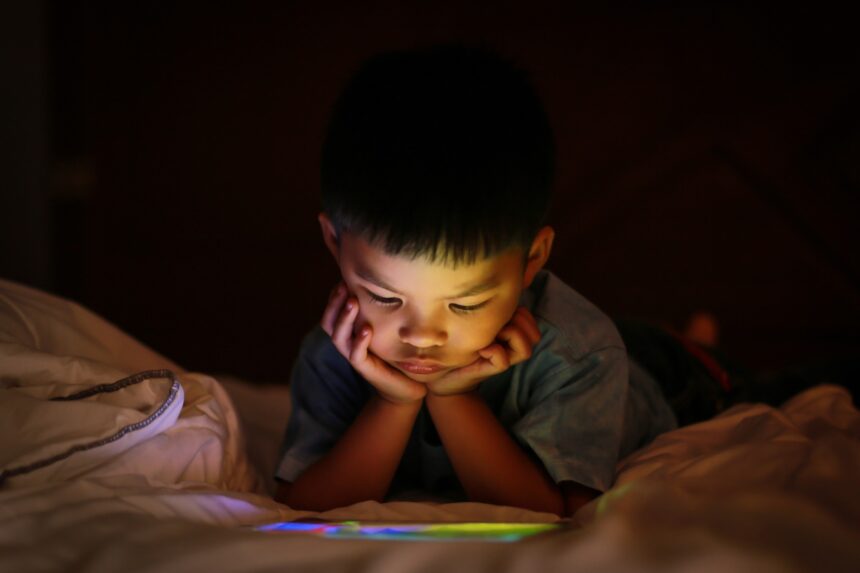In the quiet glow of tablets and smartphones across Montreal bedrooms, a silent health crisis is brewing among our youngest generation. Recent research has revealed what many parents have long suspected but perhaps didn’t want to face: excessive screen time is not just affecting our children’s attention spans and social skills—it’s potentially damaging their hearts.
A comprehensive study published last month in the Journal of Pediatrics found that children who spend more than four hours daily on screens show measurable changes in cardiovascular health markers by their early teens. The implications are as alarming as they are illuminating, especially as we navigate an era where digital devices have become de facto babysitters.
“What we’re seeing is essentially a cardiovascular aging process beginning decades earlier than previous generations,” explains Dr. Marie Lavoie, cardiologist at Montreal Children’s Hospital. “The sedentary behavior coupled with the stress response triggered by certain digital content creates a perfect storm for developing risk factors traditionally associated with middle age.”
The study tracked over 2,500 children from ages 8 to 15, documenting not just screen time but also measuring blood pressure, cholesterol levels, and arterial stiffness—a key indicator of cardiovascular health. Children with the highest screen usage showed a 37% increase in markers associated with future heart disease compared to those with moderate or low usage.
Perhaps most troubling is how these effects compound over time. Dr. Lavoie notes that the cardiovascular system develops crucial resilience during childhood and adolescence. “These are formative years where movement patterns and stress responses are being programmed. The body remembers inactivity just as it remembers activity.”
This isn’t merely about physical inactivity, though that remains a significant factor. The research suggests the content itself matters—particularly content that triggers stress responses or disrupts sleep patterns. Violent games, anxiety-inducing social media, and even the blue light emitted from devices all play their part in this complex relationship between screens and heart health.
Not all screen time carries equal risk, however. Educational content consumed in moderation appears to have negligible negative effects, while certain active video games that require physical movement might actually provide some cardiovascular benefit—though they’re no substitute for genuine outdoor play.
The social dimension can’t be overlooked either. Children who reported using screens primarily for social interaction showed less severe cardiovascular effects than those using screens primarily for passive entertainment. This suggests the impact might be mitigated somewhat by the psychological benefits of connection—an interesting wrinkle in our understanding of digital health.
What can parents do with this information? The answer isn’t a return to some imagined pre-digital paradise—that ship has sailed. Instead, experts recommend a balanced approach that acknowledges both the reality of modern life and the biological needs of developing bodies.
The Canadian Paediatric Society recommends limiting recreational screen time to a maximum of two hours daily for school-aged children, with even stricter limits for younger kids. More importantly, they suggest establishing “screen-free zones” in bedrooms and during meals, and prioritizing outdoor play whenever possible.
Schools have a role to play as well. Some forward-thinking Montreal schools have implemented “movement breaks” throughout the day, recognizing that children were previously getting natural movement transitions between activities that digital learning often eliminates.
“It’s about creating a culture where movement is valued as much as academic achievement,” says Jean Tremblay, physical education coordinator for the Eastern Townships School Board. “We’re seeing improvements not just in physical health markers but in academic performance and emotional regulation as well.”
The heart health findings add urgency to what many educators and healthcare providers have been advocating for years: a more balanced relationship with technology, especially for developing bodies and minds.
Parents facing the daily battle over screen time might take some comfort in knowing that moderate, high-quality screen experiences likely pose minimal risk. The greater concern lies with the replacement of physical activity and the disruption of sleep patterns that often accompany excessive screen use.
As we navigate this unprecedented experiment in child development, the emerging research serves as both warning and guide. Our children’s hearts—both literally and figuratively—may depend on finding that elusive balance between embracing the digital age and honoring the biological needs that haven’t changed despite our rapidly evolving technology.
The question we must ask isn’t whether screens belong in our children’s lives—they undoubtedly do. Rather, we must consider: what belongs in our children’s lives besides screens? The answer, it seems, might just save their hearts.
For more insights on emerging cultural trends, visit CO24 Culture or explore our analysis of modern parenting challenges at CO24 Trends.










